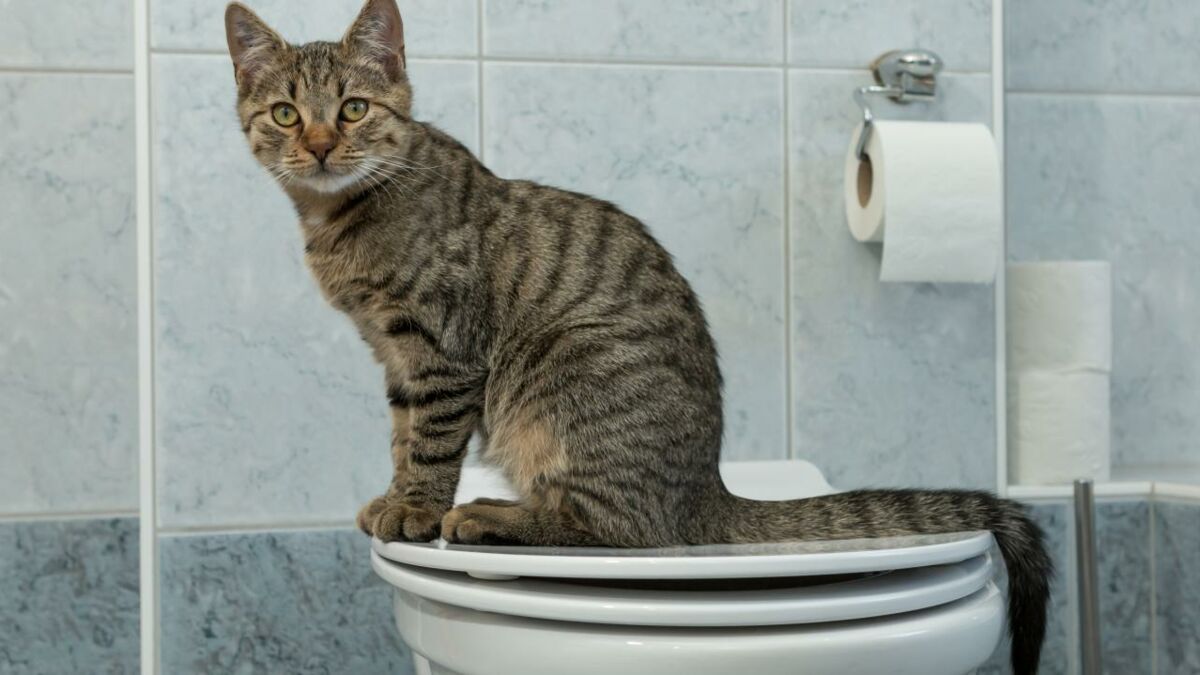Just about everyone is bound to have their own conception when it comes to Don’t flush cat feces down the toilet.

Introduction
As cat proprietors, it's necessary to be mindful of just how we get rid of our feline friends' waste. While it may appear hassle-free to purge feline poop down the commode, this technique can have damaging repercussions for both the environment and human health and wellness.
Environmental Impact
Flushing cat poop introduces hazardous virus and parasites right into the water system, posing a substantial danger to aquatic ecological communities. These pollutants can negatively affect marine life and concession water quality.
Health and wellness Risks
In addition to environmental worries, purging pet cat waste can also position wellness dangers to human beings. Feline feces may include Toxoplasma gondii, a parasite that can create toxoplasmosis-- a possibly serious ailment, particularly for expecting ladies and individuals with weakened immune systems.
Alternatives to Flushing
Thankfully, there are much safer and much more accountable methods to throw away pet cat poop. Think about the following alternatives:
1. Scoop and Dispose in Trash
One of the most common technique of taking care of feline poop is to scoop it right into a biodegradable bag and throw it in the garbage. Make sure to make use of a devoted clutter scoop and dispose of the waste immediately.
2. Usage Biodegradable Litter
Opt for eco-friendly cat litter made from products such as corn or wheat. These trashes are environmentally friendly and can be safely thrown away in the garbage.
3. Bury in the Yard
If you have a backyard, consider burying pet cat waste in a marked location away from vegetable yards and water sources. Make certain to dig deep sufficient to prevent contamination of groundwater.
4. Set Up a Pet Waste Disposal System
Invest in a family pet waste disposal system particularly created for feline waste. These systems utilize enzymes to break down the waste, minimizing odor and environmental effect.
Conclusion
Liable pet dog possession prolongs past supplying food and shelter-- it additionally entails appropriate waste administration. By avoiding flushing feline poop down the bathroom and going with different disposal approaches, we can minimize our environmental footprint and protect human health.
Why Can’t I Flush Cat Poop?
It Spreads a Parasite
Cats are frequently infected with a parasite called toxoplasma gondii. The parasite causes an infection called toxoplasmosis. It is usually harmless to cats. The parasite only uses cat poop as a host for its eggs. Otherwise, the cat’s immune system usually keeps the infection at low enough levels to maintain its own health. But it does not stop the develop of eggs. These eggs are tiny and surprisingly tough. They may survive for a year before they begin to grow. But that’s the problem.
Our wastewater system is not designed to deal with toxoplasmosis eggs. Instead, most eggs will flush from your toilet into sewers and wastewater management plants. After the sewage is treated for many other harmful things in it, it is typically released into local rivers, lakes, or oceans. Here, the toxoplasmosis eggs can find new hosts, including starfish, crabs, otters, and many other wildlife. For many, this is a significant risk to their health. Toxoplasmosis can also end up infecting water sources that are important for agriculture, which means our deer, pigs, and sheep can get infected too.
Is There Risk to Humans?
There can be a risk to human life from flushing cat poop down the toilet. If you do so, the parasites from your cat’s poop can end up in shellfish, game animals, or livestock. If this meat is then served raw or undercooked, the people who eat it can get sick.
In fact, according to the CDC, 40 million people in the United States are infected with toxoplasma gondii. They get it from exposure to infected seafood, or from some kind of cat poop contamination, like drinking from a stream that is contaminated or touching anything that has come into contact with cat poop. That includes just cleaning a cat litter box.
Most people who get infected with these parasites will not develop any symptoms. However, for pregnant women or for those with compromised immune systems, the parasite can cause severe health problems.
How to Handle Cat Poop
The best way to handle cat poop is actually to clean the box more often. The eggs that the parasite sheds will not become active until one to five days after the cat poops. That means that if you clean daily, you’re much less likely to come into direct contact with infectious eggs.
That said, always dispose of cat poop in the garbage and not down the toilet. Wash your hands before and after you clean the litter box, and bring the bag of poop right outside to your garbage bins.
https://trenchlesssolutionsusa.com/why-cant-i-flush-cat-poop/

I hope you liked our topic about How to Dispose of Cat Poop and Litter Without Plastic Bags. Thank you so much for spending some time to read our article. Those who enjoyed reading our blog posting kindly be sure to pass it around. Kudos for your time. Don't hesitate to check up our blog back soon.
Click Here!